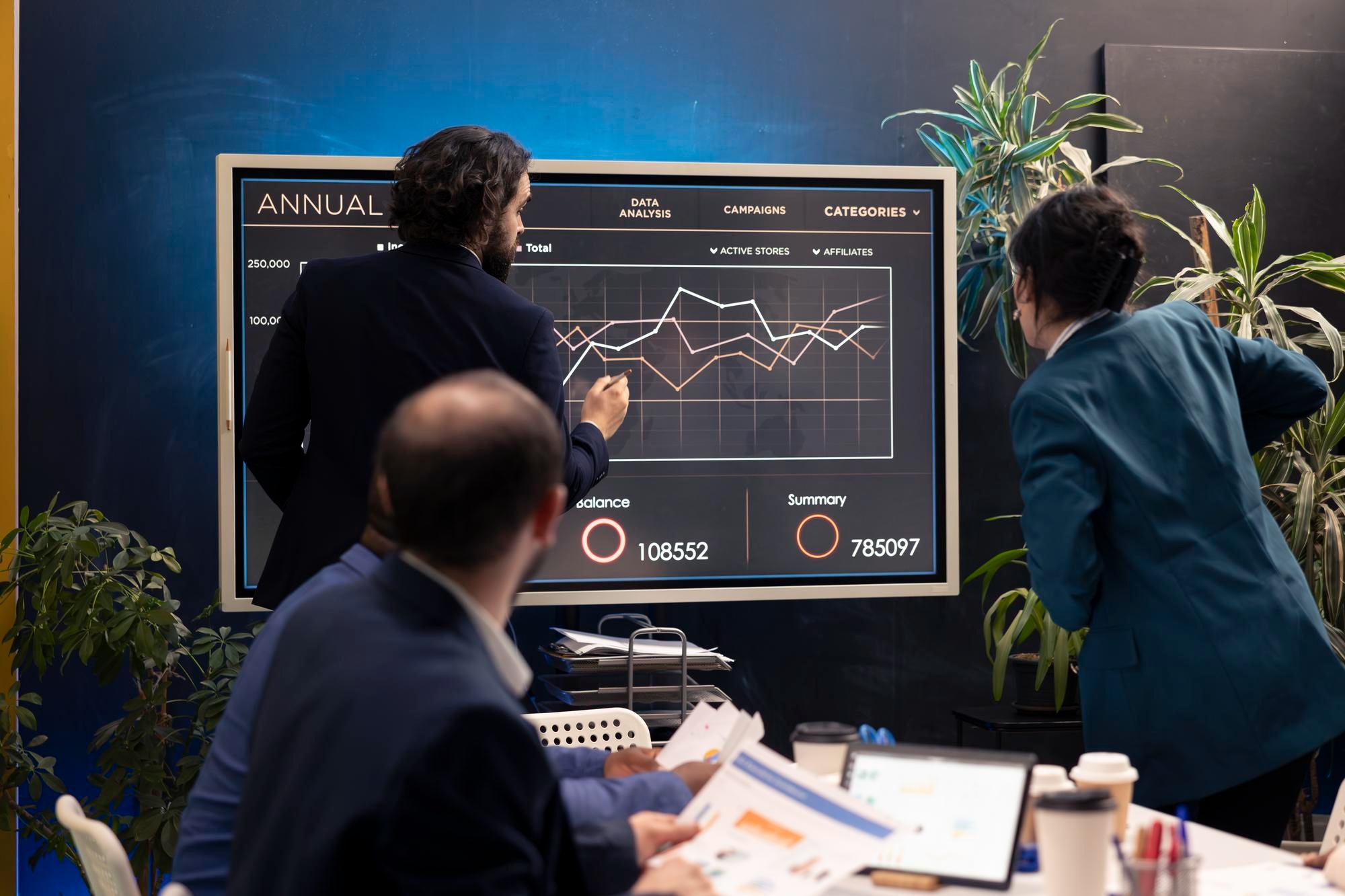28 April 2025
How Time Series and Forecasting Help You Make Smarter Business Decisions?
By analyzing historical data patterns, time series analysis forecasting enables organizations to predict future trends, allocate resources strategically, and maintain a competitive edge.

How Time Series and Forecasting Help You Make Smarter Business Decisions?
In today’s data-driven economy, businesses face mounting pressure to anticipate market shifts, optimize operations, and mitigate risks. Time series and forecasting methodologies—powered by advancements in data analytics and business intelligence—have emerged as indispensable tools for achieving these goals. By analyzing historical data patterns, time series analysis forecasting enables organizations to predict future trends, allocate resources strategically, and maintain a competitive edge.
Wondering how?
In this blog we will explore it. But before that first understand what time series and forecasting is.
What is Time Series and Forecasting?
Time series and forecasting involve analyzing sequential data points collected over time to identify trends, seasonal variations, and cyclical patterns. Unlike traditional analytics, time series analysis forecasting focuses explicitly on temporal dependencies, making it ideal for predicting metrics like sales, demand, or stock prices.
For instance, real estate firms use time series analysis forecasting to predict property prices based on historical trends. Governments use it to optimize resource distribution for e-governance initiatives, while manufacturers rely on time series and forecasting to predict supply chain fluctuations.
Why Time Series and Forecasting Matter for Modern Businesses
The benefits of time series and forecasting extend across industries, helping businesses make data-driven decisions. By leveraging time series analysis forecasting, organizations can:
- Enhance Demand Forecasting – Predict future consumer demand and adjust production schedules accordingly.
- Optimize Financial Planning – Improve budget allocation by understanding revenue patterns.
- Strengthen Risk Management – Identify potential downturns in financial markets or business cycles.
- Improve Inventory Management – Reduce overstocking and understocking issues.
- Increase Operational Efficiency – Streamline workforce and resource planning with accurate projections.
Applications of Time Series and Forecasting
1. Real Estate Market Predictions
Time series and forecasting help real estate companies anticipate property price trends. By analyzing past transaction data and external economic indicators, businesses can refine investment strategies and property valuation models.
2. E-Governance Resource Allocation
Government agencies use time series and forecasting to predict population growth, infrastructure needs, and budget allocations. This ensures efficient resource distribution and improves the delivery of public services.
3. Retail and E-Commerce Demand Forecasting
Retailers rely on time series analysis forecasting to optimize inventory levels, ensuring product availability while minimizing excess stock. Predicting customer demand based on historical sales trends improves profit margins.
4. Financial Market Analysis
Traders and financial institutions use time series and forecasting to predict stock market trends, helping them make informed investment decisions. Algorithmic trading strategies leverage real-time time series analysis forecasting for rapid, data-driven trades.
5. Manufacturing and Supply Chain Optimization
Manufacturers use time series and forecasting to predict equipment failures, schedule maintenance, and streamline production planning. This reduces downtime and improves operational efficiency.
How to Implement Time Series & Forecasting?
1. Data Collection and Cleaning
The foundation of time series and forecasting is high-quality data. Businesses must collect relevant historical data from internal systems, external sources, and IoT devices. Cleaning and preprocessing the data—removing outliers and filling missing values—ensures accurate time series analysis forecasting.
2. Visualize and Decompose Trends
Businesses can use visualization tools like Matplotlib, Power BI, or Tableau to identify trends, seasonality, and noise in data. Decomposition techniques such as STL (Seasonal-Trend decomposition using Loess) help break data into meaningful components, improving the effectiveness of time series and forecasting models.
3. Test for Stationarity
Stationarity is essential for reliable time series analysis forecasting. Non-stationary data (where statistical properties change over time) can lead to misleading predictions. Augmented Dickey-Fuller (ADF) tests help determine stationarity, and techniques like differencing or logarithmic transformations can stabilize variance.
4. Model Selection
Different models suit different types of time series and forecasting challenges:
- ARIMA (AutoRegressive Integrated Moving Average) – Ideal for non-seasonal data with trends.
- SARIMA (Seasonal ARIMA) – Accounts for seasonal fluctuations.
- Prophet (Developed by Facebook) – Best for handling multiple seasonality components.
- LSTMs (Long Short-Term Memory Networks) – A deep learning approach for complex time series patterns.
5. Validate and Deploy
After training a model, businesses must validate its accuracy using metrics such as Mean Absolute Error (MAE) or Root Mean Square Error (RMSE). Once optimized, the time series analysis forecasting model is deployed for real-time decision-making, integrating it with business intelligence platforms.
Instalogic Helps You Implement Time Series and Forecasting
At Instalogic, we specialize in time series and forecasting solutions that empower businesses with predictive insights. Our expertise in time series analysis forecasting helps organizations improve decision-making, reduce operational costs, and maintain a competitive advantage.
With a dedicated team of data scientists, we integrate advanced analytics models with business intelligence platforms, providing actionable forecasts tailored to your industry. Whether you need real-time demand forecasting, financial trend analysis, or supply chain optimization, Instalogic delivers scalable and impactful solutions.
Conclusion
Time series and forecasting are no longer optional for businesses aiming to thrive in volatile markets. From demand prediction in real estate to resource allocation in e-governance initiatives, time series analysis forecasting empowers organizations to turn historical data into strategic foresight. By adopting these techniques, leaders can optimize operations, reduce costs, and stay ahead of competitors.
The question isn’t whether to adopt time series analysis forecasting—it’s how quickly your business can harness its potential.
With Instalogic, you can start leveraging time series analysis and transform uncertainty into opportunity through informed decision-making powered by time-based insights. Want to know more? Contact us!